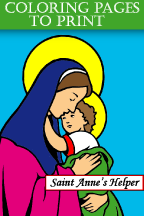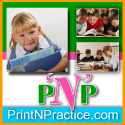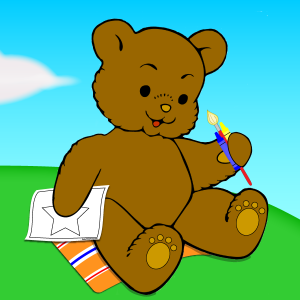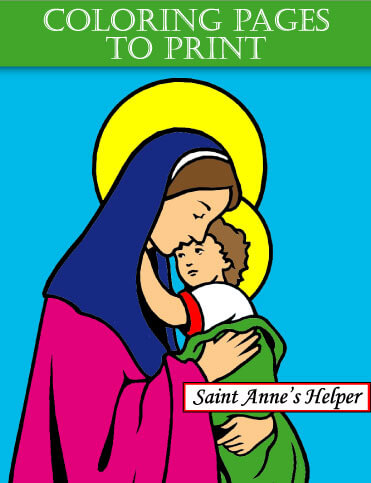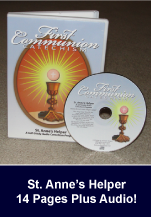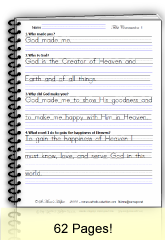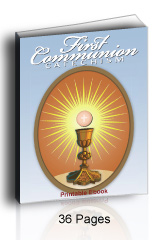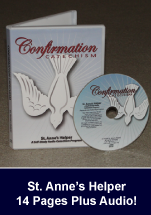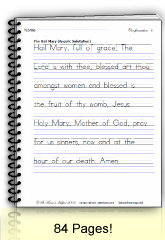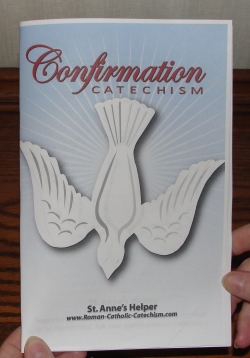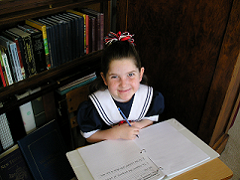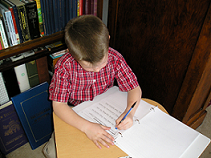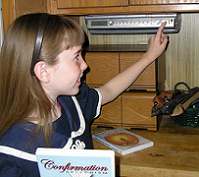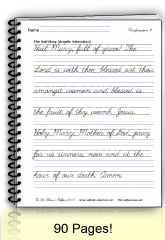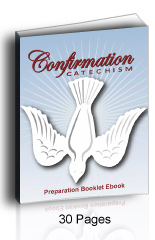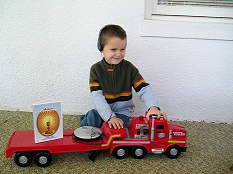- Home
- Catholic Homeschooling
A Truly Catholic Homeschool
Keep It Catholic For The Love Of God
A truly Catholic homeschool does not take loads and loads of money. Homeschooling will take lots of prayer, hard work, and time.
Dad, Mom, and children should all pray for the graces necessary to succeed.
Should I Homeschool?
Pray. If you do not have a good Catholic school near you and you can homeschool, you surely should or you should provide for a tutor or grandparent to help.
It is you who will answer at the Pearly Gates for how you trained up your children in the ways of the Lord.
Whether you bring your children home or keep them in school, you still need to teach them to know, love, and serve God in this world.
It is a matter of duty and you by your marriage have the graces necessary.
Let the Catholic faith, prayers, and the catechism guide your whole day in all the subjects that you study.
The time is now. Integrate the faith into everything you do.
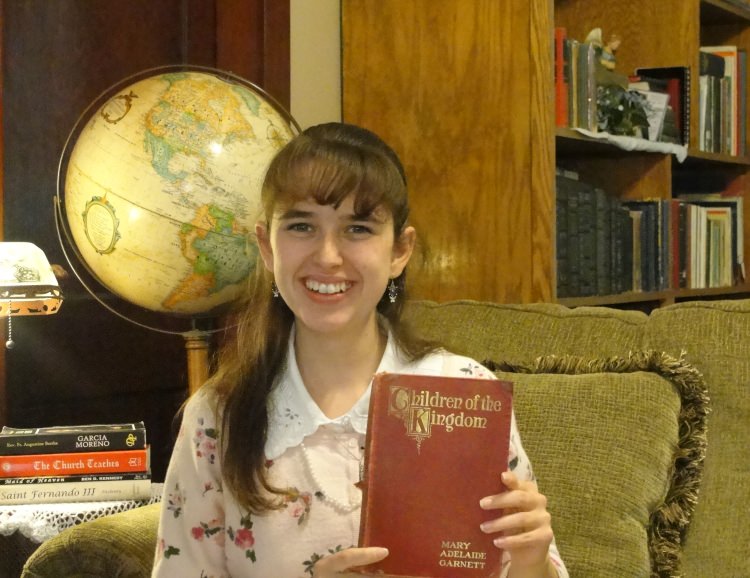 Catholic homeschool curriculum can help you teach your children to know, love, and serve God. The fruits are worth the efforts!
Catholic homeschool curriculum can help you teach your children to know, love, and serve God. The fruits are worth the efforts!Can I Homeschool?
Again, pray. A truly Catholic homeschool means that you teach the Catholic Faith to your children with all the other subjects.
Are you on the fence? Should you teach your children at home? Can you? Are you asking, "How can I homeschool?"
There are a thousand answers to these questions; yet if you keep your children's salvation first in mind and earnestly follow God's Will, He will provide so that you can homeschool your children in the Catholic faith. He will grant the ability and the resources.
Finding good books is half the battle. Pray to St. Anthony.
Catholic Homeschool Resources
Jump down to see the homeschooling resources on this page:
- Curriculum
- Principles
- First Communion
- Confirmation
- Classroom whiteboards and calendars
- Homeschool Planner
- More homeschool ideas
- Catholic homeschool planner
See Catholic homeschool curriculum here.
School At Home? Distance Learning?
If you're homeschooling due to the Covid-19 meltdown, this page has some great ideas for you.
First: pray.
- Start with a program that has the most books that suit your family's needs.
- Are you hoping to be able to choose truly Catholic books? Hint: Choose only good books.
- Are you trying to keep little ones happy at the same time that older children need to navigate new school assignments? Hint: Start with the youngest children first.
- Are you trying to help your children truly learn the basics behind their lessons in spite of what's sent home?
- Do you wish you had a tutor to help them memorize their facts or learn good penmanship?
- Are you juggling emails and assignments and children; and emails and assignments and children?
Again? Pray. Ask Jesus, Mary, and Joseph to guide and protect your family and your home. Saint Anne was Mary's mother and Jesus' grandmother. She helps those who teach their children.
Next? Do not try to bring school home.
School teachers are teaching children of similar ages and learning levels. You may have children who are several different ages. Pray again. :-)
Use a planner (see section 6 below). Schools have many non-teaching hours in a day like line up, bathroom time, lunch and recess, etc.
Schedule your day so these breaks help you with other duties like preparing food, laundry, house care. Did I mention praying? Throughout the day make a spiritual glance to God to help you.
If your children are distance learning, you are trying to keep several teachers' assignments in good order for several different children. You are an administrator or a supervisor at this point. Pray.
Pray for the teachers as their schedules are crazy, too.
What else? Help others like priests, nuns, teachers, family, friends and associates by sending them links to what helps you.
You are welcome to share our teacher page and other pages with religious, catechists, and youth organizers as they may be looking for good catechism resources with worksheets that they can use in online classrooms and hybrid schools.
Hopefully, you will homeschool "for real", not just do "school" at-home.
I hope that you are free to choose or to create your own assignments or to use your own books (read them before you assign them) and worksheets. This is why I have written the rest of this page.
Be assured of my prayers. ~Mary
Saint Anne's Helper Catholic Homeschool Ideas
First Things First: Principles of Catholic Homeschooling
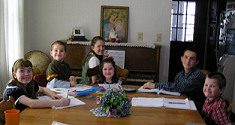
Saint Anne's Helper Catholic homeschool resources help you design your own homeschool to fit your own needs.
Preserving your children's souls is the main reason you bring them home: that they may learn to know, love, and serve God in this world.
Get to Heaven.
It's the one thing necessary.
Write that down.
It's good to keep it in mind when your morale is low or the day is long.
After prayerful consideration of all the elements involved, if you use the good resources that you have found, and if you persevere for the good of your children the best that you are able; you'll do well. Simply continue improving and updating as needed.
If you find a better book, replace the previous book with the better book and search for related books: Catholic Missal, Catechism of the Council of Trent, Baltimore Catechism, etc.
Today there are so many home education helps available that it can be easier for you to give a good education at home now than it was before the turn of the century 2000.
If you choose to homeschool, you might even be able to do it without paying tuition by simply finding or buying your own materials and creating your own lesson plans, transcripts, and diplomas.
Quick Catholic Homeschool Advice
If you're homeschooling many different ages, the best advice I was given was from my sister-in-law, mother of 13 including two religious and one seminarian:
Start with the youngest children first.
Best advice I heard at a Catholic homeschool convention? Give each older child an hour to be in charge of preschool and kindergarten aged children.
My addition? The same answer that many seasoned homeschoolers will share: Have your little ones listen anytime you read aloud. Hint: Sit so you can get out of the couch if they fall asleep. :-)
Keep serious thinking studies like biology and chemistry for nap times and after the youngest children go to bed for the evenings. See more below.
Books For A Solidly Catholic Homeschool
You will try to make sure that your children have learned, or at least covered, every truth that your children need to learn before they leave home.
You will at least need to give them a sense of what is true and a chance of being able to keep the Faith through the to the end.
Sorting which are the good school books is truly half the battle!
After nearly thirty years, we have owned more books that I will not use than those that I will. Live and learn. . . .
I hope to prevent you having the same problem by sharing the information that I have found in these pages.
Truly, we've thrown out more books than we will use. I want to share with you the good ones that we have found, so you do not waste your money on goofy or bad books. At least you'll have an idea of good replacements when you need them.
One clue for me is that many books that are set up in a "textbook" fashion often have odd agendas, so it is good to have real Catholic books on hand to verify what seems doubtful.
In other words, be careful with textbooks.
The ultimate classical education is a Catholic education. This is what we have sought in our family and I think that my notes will save you some some time money and heartache.
Catholic Curriculum For Homeschool
Catholic or Secular? To Enroll or Not? Lesson Plans or No?
Most of us need help at the beginning.
Many of us need to buy used Catholic homeschool curriculum or find cheaper prices on books at Amazon, especially if we have not come from a homeschooling background.
Our first year, it was super helpful that we bought Our Lady of Victory School's curriculum in a box. Everything was laid out and ready to go:
- books,
- lesson plans, and
- encouraging advice by phone or email.
If you choose to use a full homeschool program, the curriculum, books, and lesson plans come "in a box" for a boxed curriculum.
You can also find enrollment, grading and coaching services, counselors, online transcript services, online planners, and even full online courses as at these Catholic home schools:
- Our Lady of Victory School,
- Seton,
- Andrew Pudewa's excellent Institute for Excellence in Writing (IEW),
- Mother of Divine Grace (see NOTE below), and
- other curriculum providers
- and even YouTube (see NOTE).
Homeschool Connections
Catholic Homeschool Connections Online (see NOTE) has many Catholic online homeschool classes on Moodle for distance learning.
Maureen Wittmann, who wrote the Catholic Homeschool Companion, started HSC as mostly an online Catholic high school homeschool. It is huge now!
They offer so many online programs with either live or recorded classes. They have online homeschool math classes and most of the normal high school courses.
Their writing courses are some of our favorites. You can sign up for their recorded classes, too. We have found many of their classes to be very helpful.
Catholic Homeschool Programs
Catholic Homeschool Curriculum
Buying Catholic Homeschool Books
High School Summer Reading List
Our Lady of Victory School - Traditional
Mother of Divine Grace School (see NOTE)
Note: Be careful using YouTube videos and any online source as they can be deleted, replaced, or edited. Always read or watch before your children see the materials.
In 2020 some of these recommendations "do have some ancillary connections to the CCS (Common Core Standards - independent but use books are aligned to the CCS) – nothing necessarily direct but something you may want to be aware of. You can search alphabetically on the Homeschool Roadmap."
Use the Baltimore Catechism?
Disclosure: I show products that I think will help you. If you use my links, I may earn ad commissions at no extra cost to you. As an Amazon Associate I earn from qualifying purchases.
1. Catholic Homeschool Curriculum
You do not want to waste time with bad books.
Me either.
I cannot spend time writing about bad books, so what you see on this site are the best books that I have found during over twenty-five years. Not that there are not other excellent books available, it's just that the books we recommend here are the best we could find.
Many parents choose Catholic homeschooling curriculum (accredited homeschool program, or not) in order to use the Catholic catechism of their choice. This is the main reason homeschooling families come home.
A good catechism is also the best guide as to what is good or bad in other books. It lets you know where to draw the line.
Why? Because it explains the good and the bad. It sets the limits. Well, God did.
When we keep our children home from institutional schools we have the freedom to choose the best books like the Baltimore Catechism and the Douay Rheims Bible. The Baltimore is a handy book with concise easy to memorize answers which is why it is so popular. Most of my recommendations are based upon the truths found in it.
Another reason to choose a canned curriculum is to have all the books and lesson plans in a box, a boxed curriculum.
OLVS and Seton are very good at this.
Video And Audio Instruction
The main reason for this website is to help others to learn the Catholic Faith easily.
The old Baltimore Catechism and Deharbe's old catechism books are excellent for this, yet a helping hand with instruction and drill are always welcome, especially if it is on hand all day at anytime.
There are many helps with video instruction of math, science and even writing out there on the internet, so we're doing our little bit with audios and printables for First Communion and Confirmation catechism.
Our audio downloads help with reviewing the catechism religion questions and answers - so you have a tutor to help with review. This section describes our own websites:
1.A. Catholic Homeschool Religion Curriculum
Saint Anne's Helper - Our own Baltimore Catechism Audio Catechism (CDs or downloadable audio books) and verbatim Catechism Copybooks (Catholic Ebooks for Manuscript and Cursive writing worksheets) for First Communion and Confirmation. They teach the questions and answers that are generally asterisked to be memorized in preparation for these sacraments.
You can have your children practice without needing to use paper and ink because the PDF files are all interactive. This means that you can copy the files to a file for each child and they can fill in the worksheets digitally.
We also have:
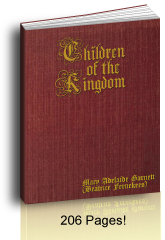
Children of the Kingdom Ebook is lovely alphabet of saints for children in a download. Read it today.
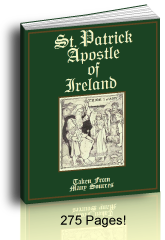
St. Patrick, Apostle of Ireland Best book on Saint Patrick I've read. Download.
See interesting Catholic catechism ideas here.
1.B. PrintNPractice Free Catholic Homeschool Curriculum
PrintNPractice is our sister site where you can print practice worksheets for other subjects like
- Math,
- Handwriting,
- Phonics,
- Grammar, and
- Spelling.
Oh, how I wish I had put all these treasures here on this site. Pardon my mistake and enjoy wonderful good worksheets and homeschool ideas at PrintNPractice.
You can download math practice worksheets, phonics practice worksheets with phonics videos so your children can learn the letter and phonics sounds (phonograms, blends, phonemes); handwriting and other practice printable worksheets.
What's cool here is that actually, you can also have your children practice without needing to use paper and ink because the PDF files are all interactive, like our Saint Anne's Helper downloads.
The practice Spelling words came from the 1940s Baltimore Catechism Living My Religion catechism series and the turn of the century 1900s DeLaSalle Catholic Readers.
All of the worksheets are free or you can buy them in bundles by subject or by grade level.
See an explanation of our PrintNPractice interactive printable worksheets and coloring pages here.
1.C. ColorWithFuzzy.com Free Printable Coloring Pages
This is our third website.
It's a delightful coloring site that you can trust for sweetness and modesty!
All pictures are modest and none contradict the Catholic faith or morals.
On top of our many sacraments and saint coloring pages on Saint Anne's Helper, we have created loads of free printable coloring pages at ColorWithFuzzy.com.
1.D. Catholic Homeschool Curriculum Packages
These notes help me to explain our other favorite resources for Catholic homeschooling:
* Catholic Home School Programs
Catholic Homeschool Curriculum Programs
Find my explanations of Our Lady of Victory, Seton Home Study School, Mother of Divine Grace, Kolbe Academy, Catholic Heritage Curricula and more.
See a short comparison in section 6 below.
* Catholic Homeschool Books
Catholic Homeschool Books - These next are our favorite Catholic bookstores: Refuge of Sinners, Adoremus Books, Emmanuel Books, TAN Books, and Neumann Press.
This page has a list of my favorite Catholic homeschool reading lists.
* Catholic Books
Catholic books - These are good Catholic books for catechism class and a list of Catholic book sellers to help you find Catholic home school books.
Buy Our Saint Anne's Helper Ad-free PDF Catholic Coloring Pages to Print
Over 200 Catholic digital pictures to print.
Bonus: Christmas, Easter, animals, patriotic and more! Catholic Coloring Book Download. Ad-free PDF.
If you use the Baltimore Catechism, you'll love Saint Anne's Helper!
2. Use Known Catholic Principles
Once you have a good catechism for children (my favorite is Jesus Comes - Our Holy Faith series) all other Catholic books can be compared to it.
Why?
It teaches the principles.
Simply. all books can be compared to the Ten Commandments and the Apostles' Creed - which are our main Catholic beliefs.
All large decisions in life can be compared to the basic Catholic beliefs. This certitude makes using Catholic values so much easier which is the main reason we chose to homeschool.
Catholic homeschool curriculum can be the very best place to start whether in accredited homeschool programs or not; but how do you find the good books?
Easy. Compare.
Well, easy and not so easy. The comparing takes time, money, and effort.
- First, find good answers to the Catechism.
- Second, use the principle of non-contradiction. (A thing cannot be true AND not true at the same time.)
- Always choose the better answer and do the better thing. (Such answers are precise and usually concise.)
Too bad that we often must buy the books before we find whether they meet these criteria or not. So here's a quick list for starters.
Does the catechism that you use teach these truths?
- God is the Creator of Heaven and earth and of all things. (Creation and the term Heaven are often missing in newer catechisms.)
- Original Sin. (It is often missing.)
- Singular confession answers. (Check that your catechism uses singular confession answers for the sacrament of Penance, using I rather than we.)
- Does your catechism use non-subjective answers like Baptism IS, Confirmation IS, the Holy Eucharist IS, the Mass IS, etc. (Sometimes the very question can confuse children "What does Baptism do for you?" The same thing it does for everyone!)
Do yourself a favor: Once your children start learning the catechism answers, teach them the answers that you want them to know for life, meaning the correct Catholic answers, not watered down or cute phrases that they will have to unlearn later.
See the Baltimore Catechism for the most concise questions and answers.
See this list of tricky Catholic answers.
3. Catholic Homeschool First Communion Catechism
First Communion is usually the first sacrament studied in Catholic homeschooling.
You'll want to have Bible, saints, and prayer books that support what your children are learning. Reading little books or stories from the Catholic Bible and the different Catholic saints really fill out the school day.
If your children have already received their First Communion, they'll still need to know the same basics and to review them throughout the years.
We have printable worksheets to copy the answers, audio downloads to memorize them, and beautiful Catholic coloring pages that help children love Jesus, Mary, and the saints.
They can even be used for handwriting class.
Homeschool is geared toward learning the
- Catholic prayers,
- Ten Commandments,
- The Apostles' Creed,
- and the seven sacraments.
Children learn to love the people in the Bible and the saints from history just as they like learning about their relatives and friends in a photo album. You'll find a short Catholic reading list here.
If you want some specifically Catholic language arts resources, our worksheets make great handwriting exercises because they help teach the faith. Kids like our:
- First Communion worksheets download.
- Catholic homeschool coloring pages to print.
- Also, check out our interactive school worksheets at PrintNPractice.com.
Buy Our Saint Anne's Helper Ad-free PDF Catholic Coloring Pages to Print
Over 200 Catholic digital pictures to print.
Bonus: Christmas, Easter, animals, patriotic and more! Catholic Coloring Book Download. Ad-free PDF.
If you use the Baltimore Catechism, you'll love Saint Anne's Helper!
4. Catholic Homeschool Confirmation Catechism
4.A. Catholic Confirmation For Little Children
Confirmation can be a harder subject to find with simple instruction in Catholic beliefs. Its questions and answers used to be woven through the higher Baltimore Catechism levels and newer good books aren't easy to find in many bookstores. In high school or as an adult, you'd have to read the whole Baltimore Catechism No. 2 to be sure to learn all the answers.
During the early 1900s many parishes had conferred Confirmation on the same day as the First Communion. With good reason, too. Confirmation is the sacrament that gives us the grace to be strong in the Faith and to persevere.
It isn't necessary to know all the basics in order to be well disposed to receive the sacrament.
The small catechisms in my parents' time during the early 1930s covered only three or four questions on Confirmation!
If you want more:
- Confirmation worksheets and quizzes for children and high school students.
- Catholic Bible recommendations
- Catholic Missals
4.B. High School Confirmation
The important thing to remember is that the sacrament of Confirmation confers the grace with or without grueling academics.
Being well disposed to receive the sacrament does not mean getting an A+ in a rigorous academic program. It means loving God, wanting to receive the graces, and being in the state of grace to receive them well. Good academics can add to those graces, but are not the esential.
The place where rigorous academics can help one's disposition is when the questions and answers, method, and way of life all teach the student to know, love and serve God. The better the student studies the better he might know God, which means he has the better capacity to love Him, and then to serve Him.
This is one reason religious and parents are thrilled with a bright student. Half the battle of the intellect and the will is won. This is also a sign of a vocation since the student often has a better start knowing and loving God and can deal with complicated intellectual matters of faith with greater ease.
In Catholic homeschooling the learning never quits. Whether we are actively studying or simply doing our routine chores we have the opportunity to learn.
All our learning is supposed to lead us to God - this is the very purpose of education. At home the Faith can be better integrated with the family since the members are all learning the same Faith and other subjects.
- Adult Baltimore Catechism for high school and beyond.
4.C. Catholic Confirmation For Adults
Confirmation is also the subject more adults need the answers to because so many did not receive the sacrament of Confirmation after being baptized or receiving Communion.
Often homeschooling parents learn right along with their children. Having an audio book catechism for them is so handy since they can learn the basic Catholic beliefs as they drive or do minor chores. The review is easy!
All the questions required or asterisked in the old booklets are included and all have an Imprimatur. They're good for parents and students alike.
- Adult Catholic Religious Education to catch up on bigger issues yourself.
Buy Our Saint Anne's Helper Ad-free PDF Catholic Coloring Pages to Print
Over 200 Catholic digital pictures to print.
Bonus: Christmas, Easter, animals, patriotic and more! Catholic Coloring Book Download. Ad-free PDF.
If you use the Baltimore Catechism, you'll love Saint Anne's Helper!
5. Catholic Homeschool Dictation Using Dry Erase Whiteboards
5.A. Homeschool Dictation And Teaching From The Board
Teaching from the board and homeschool dictation is so important. I found it super handy to have a whiteboard when teaching Kindergarten through tenth grade.
I am so glad to have used three sizes of whiteboard:
- Mini whiteboards for being with the kids on the couch teaching their catechism answers, phonogram sounds, and math facts.
- Medium sized whiteboard, 2x3 feet, on the buffet in the dining room when we did not want to go to the other room (hubby built a wonderful wooden whiteboard stand to put on our dining room buffet even though we had had an aluminum stand - which took up too much floor space),
- And a huge whiteboard made of a 4x8 melamine board in our homeschool room the same size as school whiteboards. This treasure is a God send!
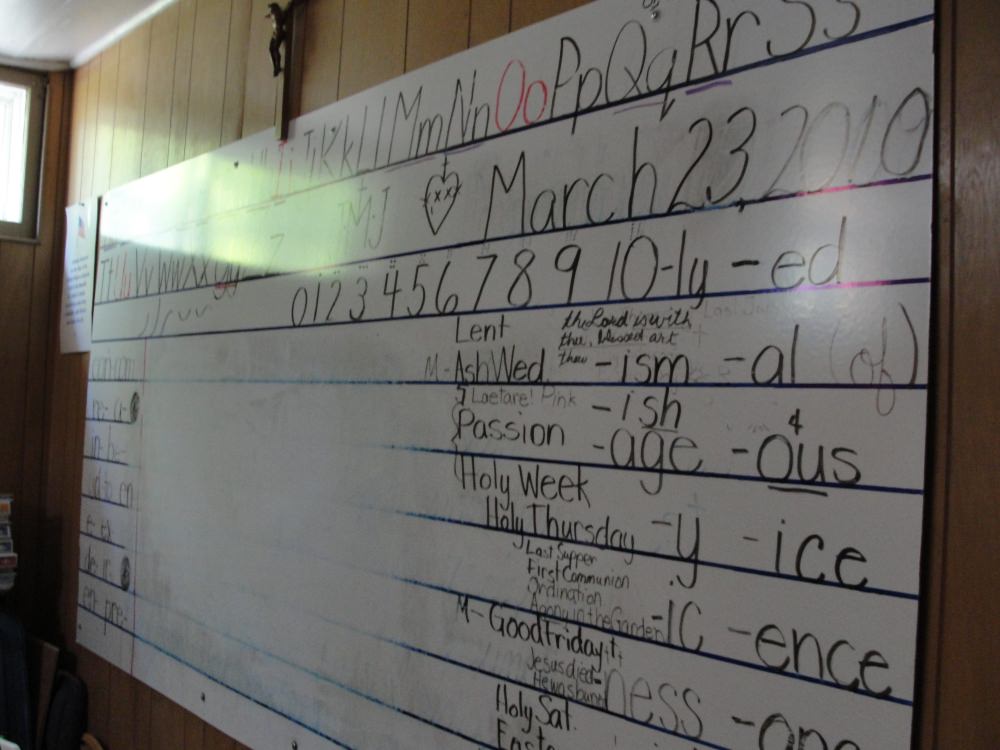 We have used this whiteboard for our Catholic homeschool for years and we love it! I keep the prefixes, suffixes and cursive strokes on the board. Now all I have to do is point to them.
We have used this whiteboard for our Catholic homeschool for years and we love it! I keep the prefixes, suffixes and cursive strokes on the board. Now all I have to do is point to them.5.B. DIY Whiteboard: Build Your Own Homeschool Whiteboard
You can make a whiteboard quickly.
This has been a huge life saver in our family. A friend recommended years ago that we get a 4' x 8' melamine white board to use in our classroom. It was one of the best decisions and best investments we've made.
These boards are usually less than $30 if you get melamine coated Masonite at a building supply store (think cheap white bathroom wall board for the shower or bathtub surround). You can either cut one for small whiteboards or leave it whole for a wall whiteboard.
Frame yours, if you like, with inexpensive molding-board. The mold board can even be used to hold your dry erase pens if you get it wide enough. The molding can protect your walls from the marker dust, fingerprints, and overstrikes.
Leaving the board with no frame is that you might sometimes over-write the board or the eraser can drag the dust that forms to your clothes or the wall behind.
Marks and the dust usually wash out of clothing fine, yet if your wall does not have a glossy finish the markers and the eraser can stain your wall. The trouble is the same if a wooden frame does not have a glossy finish.
We've left ours plain without molding, so I set my pens and erasers on a cabinet next to the board. This also keeps the pens away from babies and preschoolers.
We all enjoyed having the full four feet by eight feet sized board. It is so great to have plenty of space to write without needing to spend hundreds of dollars on a whiteboard. Ours is over twenty years old and still has a great writing surface and cleans well with water and paper towels.
Sometimes you need to clean the whiteboard better, perhaps once a week. For a DIY whiteboard cleaner we simply used liquid window cleaner (not aerosol). The liquid has not affected the surface.
Lowe's and other lumber stores have this melamine coated Masonite.
If you're looking for a magnetic whiteboard, many office supply stores like Staples carry proper whiteboards that you can use in your Catholic homeschool classroom. The magnetic boards are great for using magnets to hold up charts, pictures, and dictation work.
Some phonics programs have magnetic letters or you can use the toy type letters for word building and playing word games.
I have friends who have used sheets of plexi glass or simply use the sliding glass door or window.
Sometimes you can salvage whiteboards from offices or schools when they close or redecorate. If they're not already worn out, these are often of furniture quality.
Use whiteboard paint to freshen the surface as I found out the hard way that regular gloss spray paint does not work. The painted space stays stained.
5.B. Using A Classroom Whiteboard
We still use this same large whiteboard for our Catholic homeschool and love it. This meant that I could easily keep the date or other info on the board along with the assignment of the day.
Previously we'd been using a 3'x4' free standing whiteboard with an aluminum stand. That was a bit precarious once in a while, so my husband made a lovely wooden easel to put on our dining room buffet.
As our family grew....
The 4'x8' was such a big help!
Across the top I keep the manuscript alphabet with the few cursive letters that are different. I keep the alphabet at the top and only added the cursive strokes as we came to them. I also keep a few tricky cursive letters there like F, L, and Z, etc.
I also keep notes about the phonogram rules and about twenty words that are the main way the words are spelled (to, by, week, for, etc).
Along the left side I have a list of common prefixes and to the right side I have a list of common suffixes. Now I have many more prefixes and more suffixes; and all I have to do now is point to them since our children are all older. The Orton/Spalding/Sanseri books have a list of the main suffixes, so you can simply copy that list to the board. It's practically what I had done as I taught the words in Spalding's order.
Lines. Top, mid and base lines are a huge help, especially for beginning writers to place and shape their letters well.
If you have the lines on the board, your children will know how the letters sit on the lines or descend below them. This is why we made our PrintNPractice phonics and alphabet flashcards and videos with the blue top, mid, and base lines.
You cannot see the lines in the middle of this picture because they wore away through the year as I wrote. I did replace the lines at the beginning of every year while we still had younger children.
I had used a permanent marker to draw the lines; yet with use, the lines usually only lasted a few months. It was good for the beginning of the school year though. Any year that we had a beginning writer, I re-marked the lines when the school year started.
- I think that if you'll mark the lines in May, that the permanent ink might last longer through the next year by the time you start using them in September. It seems that if the ink has more time to dry or set, the lines last longer.
- On the other hand, I've also learned that the dry erase lines can seem permanent if you leave them over the weekend. It's hard to erase them with the dry erase erasers; but if you rewrite over the lines, they erase as normal. Whew!
- Water and a paper towel or rewriting over the lines can clean the board. I prefer to use the plastic whiteboard erasers over the old felt chalkboard erasers as the plastic erasers are easier to clean. They they are both handier than using a paper towel as the towel gets dirty fast and leaves stains on books. It doesn't sit on the ledge well either. :-)
With all this writing on the board there remains plenty of space for me to put short to medium length sentences in the middle of the board.
The space in the middle and the size of my handwriting actually works out to be the approximate size that our children could write between their margins in their notebooks and on loose leaf paper. This is "in general", and helps me have a scale of how many words to write per line.
There's also plenty of space for three children to go to the board to practice their Math tables or spelling words - even with the side columns.
How about homework? We made our PrintNPractice Math worksheets, phonics, and spelling sheets to assign for practice.
Writing with a whiteboard pen is much slicker than using chalk on a chalk board. Personally, I like the friction of chalk as it helps for pretty handwriting much like a pencil does instead of an ink pen.
BUT.
I cannot stand the screech chalk can make or the chalk dust on my hands. It's great for the kids though.
- Chalk doesn't dry out like a dry erase marker does.
- It also does not mark walls, hands, and clothes either. Well, at least permanently.
- It also does not give off fumes. Be sure to ventilate the room. :-)
Also, we left our small whiteboard under our large whiteboard so that our kindergarten children could be at my feet playing or trying to copy what I was doing.
They were a bit underfoot yet it was nice to have something for them to do for a few minutes and was a wonderful help in keeping the little ones busy. The first child I tried this with has the best base line in his handwriting of all our children. The aluminum frame made his bottom line perfect.
You can also dictate sentences and the math facts. Writing at the board is a fun change from sitting at the desk or table, especially if several are able to go to the board.
In spite of it all, for myself, I think you'll really like Expo's Dry Erase markers. I like the chisel points for writing on the big whiteboard and the fine point for the mini boards that we used on the couch. I especially like that Expo pens are low odor.
5.C. Homeschool Dictation Using a Whiteboard
With a phonics dictation method the teacher teaches the parts of words first and does not write the words unless, after trying, the student has trouble with a new word. Then the teacher can write the words on the board for the student to copy or correct his own writing.
Otherwise, you can teach from dictation with some copy help for your younger students and the whiteboard is so helpful for this.
You can remind your children of a particular phonics rule or then model how a big word is spelled while you show the rules as you write.
Dictation takes longer, yet it rewards some students with life-long spelling skills. Some students struggle no matter what you do.
Be encouraged to keep at it. Most kids "get it" at some point. Do not compare to what others are able to do. Do you best. Pray. And God will send the victory.
5.D. Latin And Grammar On A Whiteboard
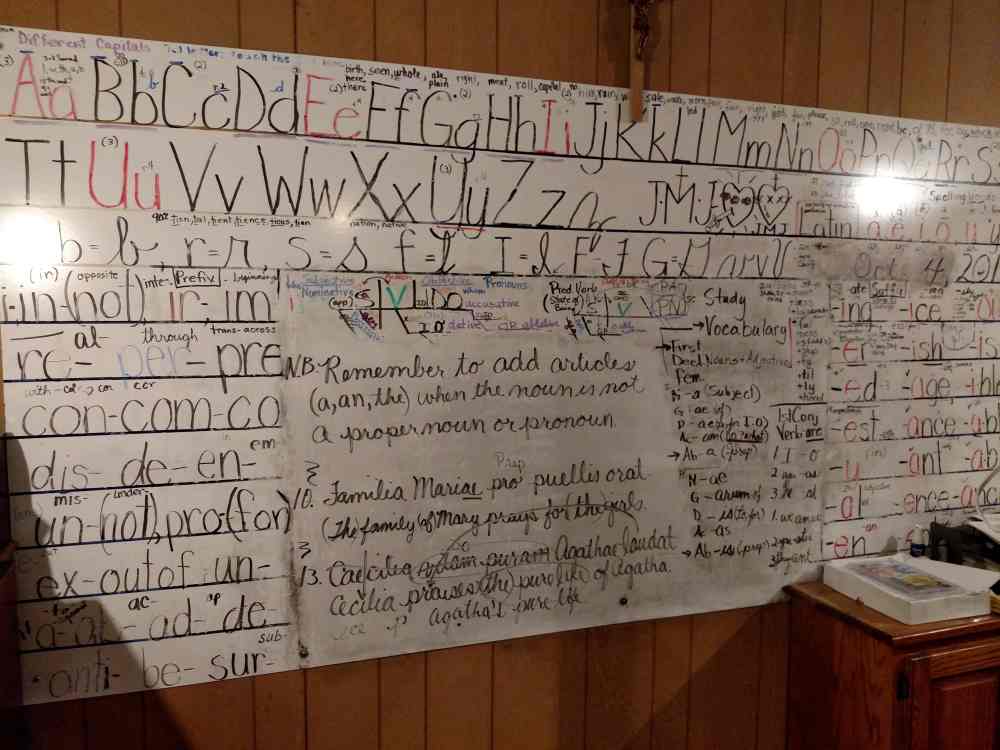 Ten years later this whiteboard is all grown up. Diagramming and Latin too!
Ten years later this whiteboard is all grown up. Diagramming and Latin too!Over the years I kept much of the notes on the board as we had new children coming while the older children needed new reminders.
Click the image above to see it a bit bigger if you'd like to see how helpful these notes can be. Here are some explanations:
- Across the top: Alphabet, phonics rules notations, common spellings.
- Left side: Prefixes and some definitions.
- Right side: Suffixes and other lists.
- Center Top Left: English diagram - Subject, verb, object.
- Center Top Right: English diagram, Subject, predicate, complement.
- Center Bottom: Room for notes and sentences.
I love our whiteboard! It has been such a wonderful help with homeschooling. It's a bit encyclopedic because it has grown through the years as we have grown as a family. It is very handy to have these notes for every day use.
If you're interested I include a close up of the English diagrams below using abbreviations. The purple is for Latin terms. Again, click the images to make them larger.
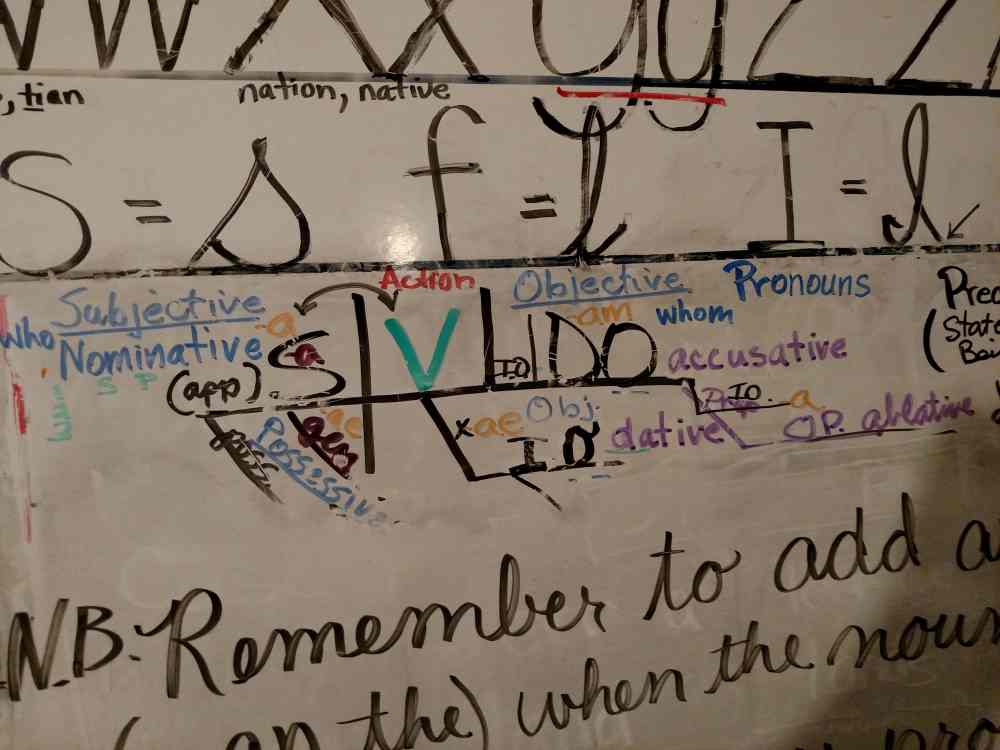 Action verb diagram: subject, verb, object.
Action verb diagram: subject, verb, object.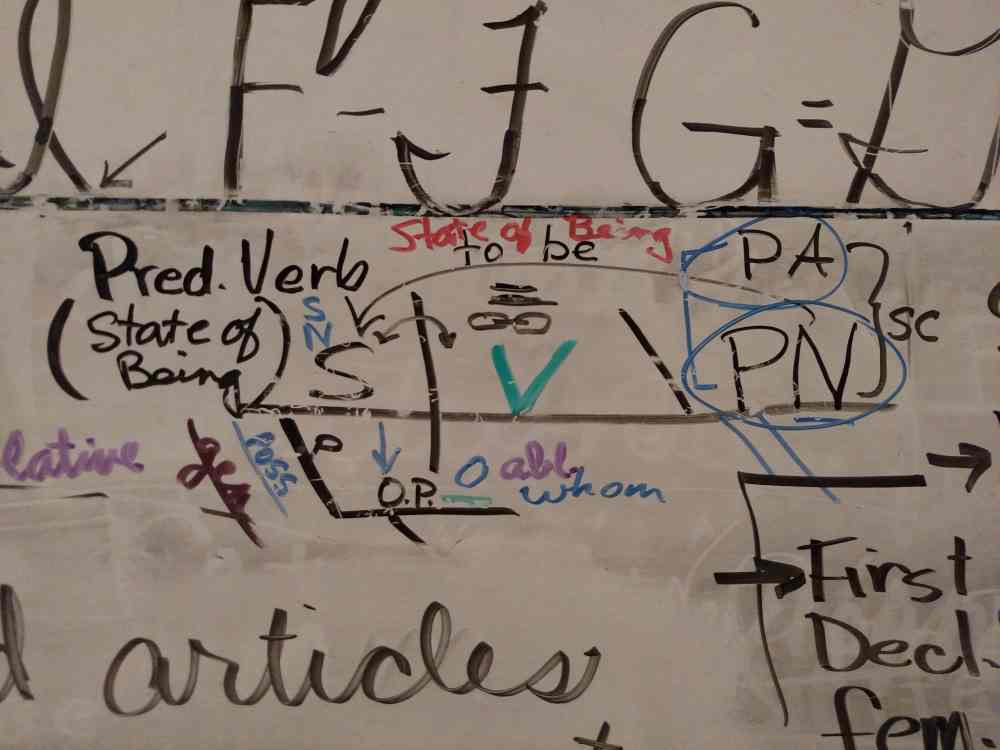 Predicate verb diagram with complements.
Predicate verb diagram with complements.5.E. Calendar Whiteboard
You can either make your own calendar whiteboard or buy the type that has a calendar chart with blanks for the days of the week or month.
You can keep the calendar whiteboard by the phone or the door so everyone can see it.
A whiteboard calendar is great for keeping track of times for altar boys to serve, music lessons, visiting tutors, and everyday life like shopping and appointments.
Buy Our Saint Anne's Helper Ad-free PDF Catholic Coloring Pages to Print
Over 200 Catholic digital pictures to print.
Bonus: Christmas, Easter, animals, patriotic and more! Catholic Coloring Book Download. Ad-free PDF.
If you use the Baltimore Catechism, you'll love Saint Anne's Helper!
6. Which Catholic Homeschool Should I Choose?
How do you compare Catholic homeschools like OLVS, MODG, Kolbe, or Seton?
First, in many of the classes they use the exact same books
- Baltimore Catechism,
- Math - Saxon,
- Science - Apologia,
- Dr. Anne Carroll's history books
- They respect, if not give precedence to the traditional Mass, especially OLVS.
They all focus on the Catholic homeschooling family. They've walked the walk. They've kept the faith. They want to help.
Some people can find fault whichever program they're using.
The answer?
Weed out what does not work and replace with what does. Here are some of the positive general differences I see.
6.A. OLVS Catholic Homeschool
OLVS seems to be the oldest Catholic Homeschool program. They even reprinted the best Catholic books that had been previously available, yet were disappearing fast in today's virtual and colossal book burning.
They stick closely to the most important Catholic books like the Baltimore Catechism, the Douay-Rheims Bible, and the traditional Daily Missal.
They've also encouraged new authors like Jim Fitzhenry and helped other book sellers like TAN Books and Mary's Books (Brother Ernest books). On the whole and personally?
Personally? I'd stick with OLVS as my base, yet keep an eye elsewhere for what to add in or replace.
See more about OLVS here.
6.B. Seton Catholic Homeschool Workbooks
Some of Seton's books have really homeschool workbooks like their 5th and 6th grade handwriting books that tour Catholic places in the United States and the World. They've sure improved the availability of truly Catholic textbooks over time - even some awkward places in the New Saint Joseph Baltimore Catechism are restored to the older version.
My favorite aspect of Seton is that most of the Clark family and many of their employees actually homeschool. In actually using the books they catch what other book sellers cannot even see.
Besides, sometimes it's a huge relief to simply have a workbook to chug through the necessary basics and not have to invent your own curriculum and lesson plans. Read the assignment. Answer the questions. It's all done for you. Read more about Seton here.
6.C. MODG Catholic Homeschool
Laura Berquist's Mother of Divine Grace School must be an education powerhouse! They focus on a classical curriculum and the liberal arts, meaning using real books rather than textbooks for school.
You have a huge amount of lea way as to which books you want to use and how to use them.
She had an excellent idea of using great books in school rather than using text books and wrote about it in her book Designing Your Own Classical Curriculum. You can replace the protestant and pagan books with good Catholic books.
Written tests? Essays? Oral quiz? You decide what level of help you want from the school.
They even have online Catholic homeschool curriculum, which means that their classes fill up fast these days.
They recommend many of the same books as OLVS and Seton do. Find MODG ideas here.
6.D. Kolbe Catholic Homeschool
Kolbe Academy has three levels of commitment for parents and students. You can choose to do a college prep program and get a diploma for it or use a less aggressive academic option that allows time for learning the trades.
See more about Kolbe here.
Buy Our Saint Anne's Helper Ad-free PDF Catholic Coloring Pages to Print
Over 200 Catholic digital pictures to print.
Bonus: Christmas, Easter, animals, patriotic and more! Catholic Coloring Book Download. Ad-free PDF.
If you use the Baltimore Catechism, you'll love Saint Anne's Helper!
7. Catholic Homeschool Duties
If you have a good Catholic school to send your children, rejoice!
If you do not, consider searching for another school in your area. Many of the traditional Catholic orders have built schools or formed parent co-ops where many parents teach their children with other families in a school setting.
If your circumstances preclude being able to use a brick and mortar school, consider these next thoughts.
7.A. Know The Main Reasons To Homeschool Your Children.
Why do parents want or need to homeschool?
There are as many reasons to homeschool as there are parents and children, yet there are principle reasons that must take precedence.
* Homeschool To Fulfill Your Duty To Give The Faith To Your Children
It is our duty as parents to give our children a Catholic education.
It does not have to be a super academic education or a high tech education.
As a matter of fact, if the children want music, high tech careers, special trades, they can get them alongside their home education or after they graduate through state inflicted requirements.
* Homeschool For The Salvation Of Your Children
Our children's salvation was our first motive in homeschooling.
If it is yours, and you pray for God's grace, and do the better thing every time that you can; God will send you the graces necessary to persevere, or you will find other options as God provides.
This does not mean that it is not hard, yet it can get easier in time with total dedication, delegation of chores, and good family habits. And prayers. :-)
* Other Reasons Catholics Homeschool
Money. Sometimes the fees at Catholic schools, Catholic homeschools, and even online courses are prohibitive.
Time. Sometimes the driving time necessary burdens the family budget, conflicts with Dad working second or third shift, or keeps little ones driving around in a car for one and two hours per day. Beware this last!
Health. Sometimes a child simply does not have the health necessary to bear the burden of leaving home.
Academic reasons. Sometimes children need a year or so to "catch up" or review, so parents homeschool or hire a tutor for private instruction.
Remote locations. Sometimes families live in remote locations where there is no good Catholic school available.
Travel. If your main livelihood causes you to travel much, or you're in the military and travel to countries that do not use your language, you might need to homeschool your children. This is where online worksheets and books are super helpful. All you have to pack is the iPad or tablet, not a whole library of books, much less workbooks.
There are many more reasons Catholics choose to homeschool.
My advice to you is to write down your reasons in the front of your planner or grade book, so you can remind yourself of the higher reason you're working so hard.
7.B. Laws? Accreditation? Do The Best You Can.
First: Check The Law In Your Jurisdiction
Country? I am in the United States, so I am not familiar with what you might have to do in other countries. There might be private schools in your country that can be helpful. Move near to them if you can. Otherwise, especially for high school, there are often boarding schools in other countries that might teach what you want your children to learn.
Ensuring that our children can be taught the faith is what we should be teaching our young couples as they prepare for marriage; yet alas, we often do not see our future duties well, laws change, and we move for new employment.
State? Each state, or province, has different laws. Check for your state's requirements, especially for high school diploma requirements. See HSLDA below.
Homeschool or Unaccredited School? In some states you sign up as an unaccredited school. It has its hazards (2015 ESSA anyone?), yet in some states your signature on the diploma is as good as any other unaccredited school's principal's signature. Currently, this is what we have in Kansas, so having accreditation is not always needed.
Help. There are organizations that can help you learn the law. Ask at local homeschool coops, conferences, Church organizations, or Homeschool Legal Defense (HSLDA).
Or, as above, see what OLVS, Seton, MODG, and Kolbe recommend on their websites or ask their counsellors.
New Catholic Homeschool Resources Abound Today
I wish we all had had access to these good Catholic homeschool books and programs years ago. In even the last ten years there are so many more resources than there used to be.
Take advantage of them to ease the burden on you and your family.
Compare The Differences
Some of the errors in Catholic books are due to ineptitude, some are simply wrong, and some are purposely put; but by God's grace and heroic Catholic publishers this is changing for the better now.
Catholic homeschools, authors, and teachers have offered many improvements through these recent years.
Pope St. Pius X's encyclical Pascendi explained so much a hundred years ago that we are now able to see plainly in retrospect.
Compare Catholic texts to the Ten Commandments, the Precepts of the Church, and common sense to eliminate what is not Catholic.
Compare. See what you can improve on your basic lists as time passes.
If you believe that you have a duty to use only good books, the best that you can, continue to see some wonderful Catholic homeschool books here.
7.C. Watch And Pray
Pray to St. Anne, patroness of Catholic mothers who teach their children. Pray for the graces you need to find good Catholic books, homeschool curriculum, and other resources.
May God protect us all in our teaching, writing, and speaking. Do please contact me wherever you find better resources. If I can, I will share them here.
Buy Our Saint Anne's Helper Ad-free PDF Catholic Coloring Pages to Print
Over 200 Catholic digital pictures to print.
Bonus: Christmas, Easter, animals, patriotic and more! Catholic Coloring Book Download. Ad-free PDF.
If you use the Baltimore Catechism, you'll love Saint Anne's Helper!
8. Free Catholic Homeschool Planner
Speaking of calendars, do you use a homeschool planner? I sure use a planner for my own time, that's for sure.
8.A. Homemade Catholic Homeschool Planner
Start With A Week-At-A-Glance Planner
I'm a paper and pen kind of girl when it comes to using a planner.
My favorite is the Week-At-A-Glance where each day is a strip down the page and all seven days are on the two page spread. It's like having a list of things to do. When I don't get it done, I just put an arrow to the next day. It lays flat next to my keyboard.
I use red pen for guests arriving or for things outside the house - whenever someone else's schedule must be met like altar boy practice or serving. I also like to mark the Catholic holy days and feast days.
- A benefit to the 8.5x11 size is that I can hide my paperwork under it when guests are coming.
- Another is that each of us can put our info on it.
- And at-a-glance see what's next.
- During Advent and Lent I use a purple pen to draw the lines or mark Fridays for Stations.
- I can make it a Catholic homeschool planner by adding the holy days and feast days in their special colors if I have them.
- Crayons or coloring pencils work very well to color sections.
- Hm... Now to add meal planning. :-)
DIY Catholic Homeschool Planner
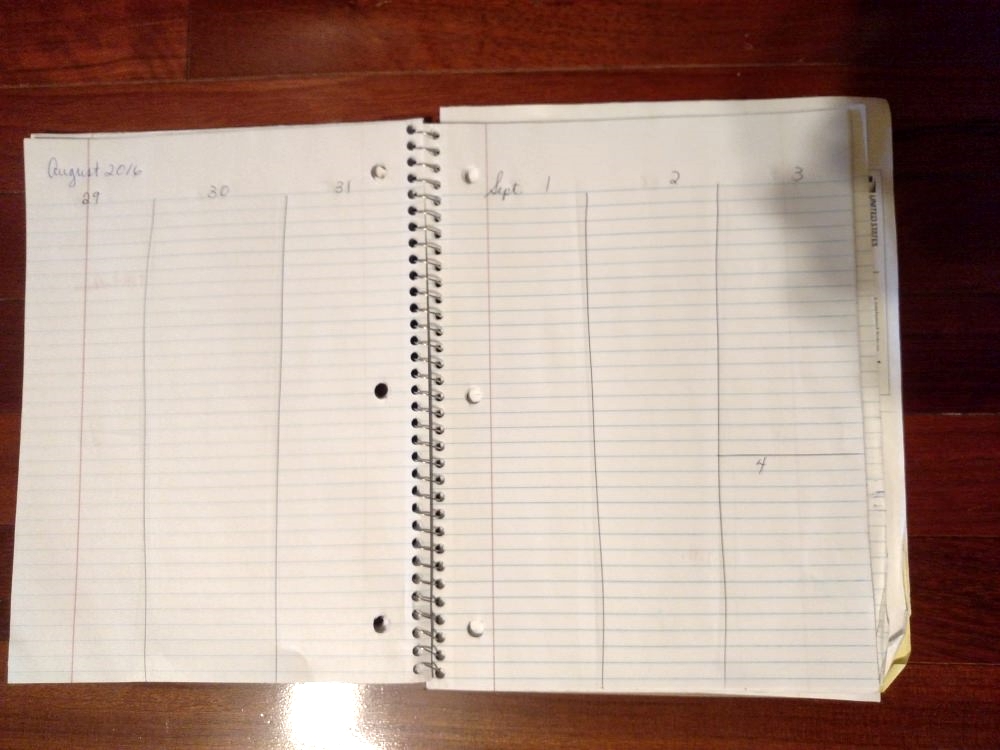 Make your own Catholic homeschool planner with a notebook and pen or buy one with the liturgical year and feast days already included. Super helpful!
Make your own Catholic homeschool planner with a notebook and pen or buy one with the liturgical year and feast days already included. Super helpful!Right now I've striped a 70 page notebook and put the dates across the top. This works very well in the mean times till I can get a "real" planner.
It's really just lines drawn down the page - I've even quit using a ruler. It's asy enough for the kids to do, too. I marvel at how much more important it is to have a place where everyone can look as the children get older.
If my notes were neater, I'd send a picture of how easy it is to do. My handwriting can be teacher perfect, but not on my planner. Hm....
'Just had an idea. I'll skip to the future and take a picture. See it above. :-)
Happy planning!
8.B. Catholic Homeschool Planning: Holy Days of Obligation
My favorite homeschoolers plan their school year around the Catholic holy days and the larger Catholic feast days.
Catholic Holy Days Planner
Catholic Holy Days of Obligation - Catholic holidays are usually referred to as Catholic Holy Days of Obligation and feast days.
Holy Days of Obligation are just like Sundays for Catholics.
Feast days are the days that venerate titles of Our Lady, the Catholic saints, or the merits of particular patron saints.
Keep track through your Catholic homeschooling year. You can also sign up for a near monthly reminder here.
Use A Catholic Liturgical Calendar To Find Feast Days
Catholic Liturgical Calendar - Many Catholic calendars have a separate list for patron saints and another for Catholic saints list in a booklet like Is it a Saint's Name? (Tan Books)
You can also use the back half of a daily Catholic Missal which lists the different saint days.
A Catholic Missal is the original "thought for the day" book!
Catholic Saints Days
Roman Catholic Saints - Catholic Saints names lists are also excellent for choosing a name for Confirmation. Many Catholic calendars have a separate list for patron saints and another for Roman Catholic saints list.
Buy Our Saint Anne's Helper Ad-free PDF Catholic Coloring Pages to Print
Over 200 Catholic digital pictures to print.
Bonus: Christmas, Easter, animals, patriotic and more! Catholic Coloring Book Download. Ad-free PDF.
If you use the Baltimore Catechism, you'll love Saint Anne's Helper!
9. More Catholic Homeschool Ideas
9.A. Homeschool Fun And Games
Throughout the year you can follow the Catholic Church's feasts and holy days to remember devotions, prepare Mary altars, and other family oriented activities at church and at home.
Remember to schedule fun activities in your homeschool days to keep them fresh and light. Here are some Catholic ideas:
Make altars: Advent with a Creche to keep track of sacrifices for Baby Jesus, Advent calendar, Christmas tree and Nativity scene, St. Joseph altar, May altar in honor of Mary, etc.
Make Spiritual Bouquets: Make and send cards to family and friends to tell them you're praying for them. Great for Christmas, Easter, birthdays, Mother's Day, and Father's Day.
Family photo album: Use extra time to catch up on creating a photo album, even if only you gather digital photos in a file to print later. Children love helping to decide which photos they want on their page or to keep in their "book".
Learn to make rosaries: String rosaries have inexpensive pieces and parts and, once you know how to tie the knots, they are handy to make and to give as gifts to family and friends. Older children love to create their own bead and chain rosaries, especially if they are able to choose their own Crucifixes, beads, and center medallions.
Note well: Be certain that no little children put the medals and beads in their mouths so that there are no choking or metal poisoning hazards.
Family picnics: Make a picnic in your own back yard, deck or porch. They make family time special without extra time and money.
Disclosure: I show products that I think will help you. If you use my links, I may earn ad commissions at no extra cost to you. As an Amazon Associate I earn from qualifying purchases.
Excellent Catholic family games:
- Catholic Trivia (pre read these to see if they match the Baltimore Catechism);
- Monopoly (great math game);
- Ten Days in the USA (Europe, Africa, etc. - great geography game focusing on states and cities - astonishingly fun and educational - in 2021 there's a bilingual Chineese/English version. You might be able to find the old set at Ebay. It is well worth a good price if you can find the old set. 'Not sure what's in the new....);
- Ticket to Ride (another geography game with more of an emphasis on cities);
- Memory matching games (using a deck of cards or special games with different themes).
- Skype or Hangouts: Call Grandma and Grandpa or other family and friends.
- See more homeschool ideas at PrintNPractice here.
9.B. Catholic Homeschool Conferences, Associations, Groups, and Coops
Catholic Homeschool Conferences
Catholic homeschool conferences can be a Godsend to attend. Go!
Take friends.
You get to see so much variety in books.
Conference speakers share really good ideas how to homeschool your child or children.
Usually book companies have books onhand for you to see and buy. Seton will take orders so you do not have to carry everything home at one time.
Most programs offer discounts for ordering while you're there. If you can go to a conference, do.
Even if it is only an online or virtual conference, I am sure that you will learn and that you can make friends. Half the benefit of attending is meeting like minded Catholics and planning future meetings.
Catholic Homeschool Associations, Groups, and Coops
Many different sorts of groups can be super helpful. I think that if you live in California, homeschoolers call their groups associations. Many in the east like Virginia and in the midwest like Illinois and Ohio call their groups coops.
If you're searching for a local group try using different terms in an online search as associations and coops are often official enough or organized enough to have websites or Facebook pages and Facebook groups.
They're great at helping you find local homeschool programs near you. Our favorite is a ski place that reserved Tuesdays for homeschooling families. The prices were one-fifth the weekend prices. We would never have experienced skiing withouth this opportunity.
Join A Catholic Homeschool Group
If you can, do join a local group; especially at the beginning.
Other families can offer ideas where to buy used Catholic homeschool books and bargain equipment like whiteboards, desks, and shelves.
It's super helpful to make friends so you can find help in emergencies or when you are stuck for ideas.
If the group seems to have lots of older families and you're new to the scene, be encouraged. It means you'll find lots of good experienced advice and willing older children at play times.
If the group seems to be made of only young families and you've just moved in with a long-time homeschool family, great! You can offer advice and help others navigate what's old hat to you. Over time, you'll find many benefits because they know the local area well and can share their faves with you.
How do you make friends? Help someone else. Offer to do what you can or to trade time or goods. Offering prayers and encouragement is often enough to be helpful in a group.
9.C. Various Catholic Homeschool Websites
These homeschool websites have great resources and ideas too:
Homeschool Articles at Homeschool-Living.com
Anna Marie Barvick wrote several excellent Catholic homeschool articles on this page. You'll like these two best:
- "Designing Your Homeschool Curriculum: Choose Latin!" and
- "Parents, Know the Four Temperaments"
Learning Latin and knowing the four temperaments have been giant helps in our family. Her articles actually offer short cuts in school and daily living.
Anna Marie has a great respect for the value of Latin and of knowing the four temperaments. Not only have her children graduated from college, she has a son who is a priest and one preparing to be a lawyer!
Her site is down, yet I still recommend the above articles if she ever publishes them again.
Leane Vanderputten at Finer Femininity has an awesome Catholic Mother Goose book for preschool and kindergarten children! I wish I had had this book for our children years ago.
Catholic Homeschool Blog Directory
See this Directory for Catholic Homeschool Blogs for resources listed by state: chbd.blogspot.com.
Hopefully these ideas make Catholic homeschool easier for you. Be assured of my prayers for you and all our visitors.
~Mary
Audio Baltimore Catechism, Catholic Worksheets, Catholic eBooks, and Catholic Coloring Pages:
Catholic catechism resources for your Roman Catholic catechism class, Faith formation, Catholic homeschool, religious education, or Sunday school lessons. Save on bundles!
Order our Baltimore Catechism worksheets. Choose your favorite fonts, colors, and SIZES on our fillable digital interactive worksheets and coloring pages. Paperless or printable.
First Communion Preparation Baltimore Catechism No. 1 For Children And Adults - Or get the bundle.
Baltimore Catechism Communion single or bundled downloads: audio, ebooklet, and digital worksheets for kids and adults. Verbatim text in all formats.

